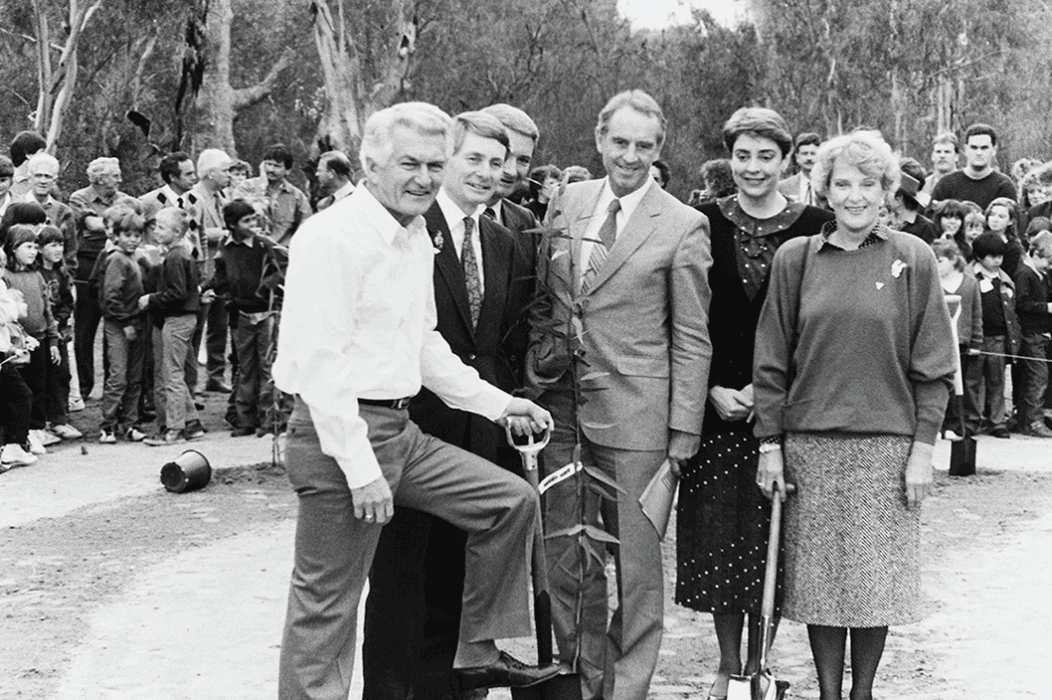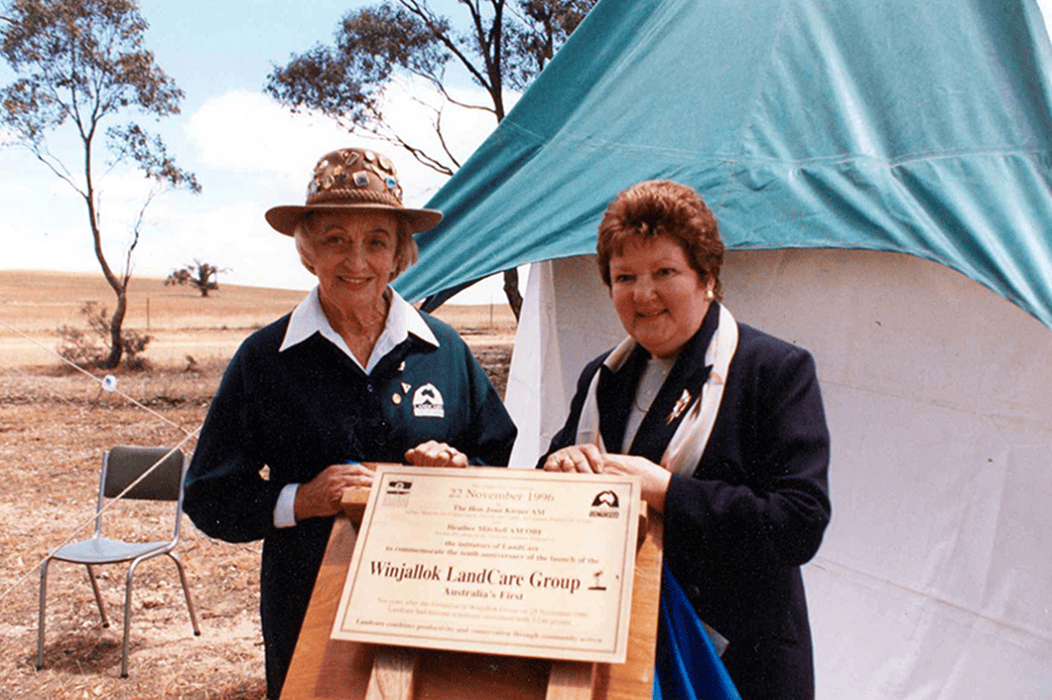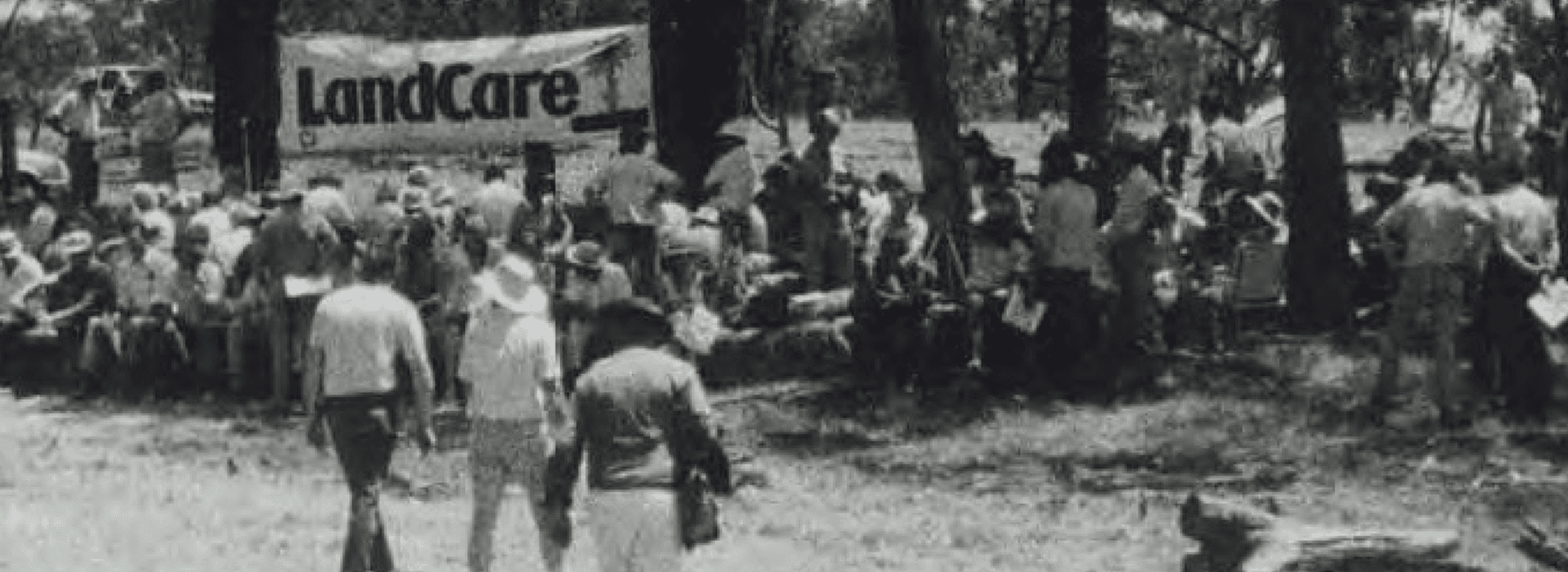Landcare has evolved to become one of the largest volunteer movements in Australia
Landcare evolved in Victoria through an initiative of Joan Kirner, (former Minister for Conservation, Forests and Lands) and Heather Mitchell, (former President of the Victorian Farmers Federation). With the generous support of community members, farmers and Victorian departmental officers, Heather Mitchell and Joan Kirner were able to launch ‘landcare’ in a small town in central Victoria in November 1986.
Many Australian communities had already begun practising ‘landcare’ decades earlier. We know that many community groups were tackling grassroots environmental issues as early as the 1950s. In January 1988, Australia’s first official Dunecare groups formed on the New South Wales Mid North Coast at Hat Head, Diamond Beach, Scotts Head and Diggers Beach.
In 1989, the national landcare movement was officially recognised with Rick Farley of the National Farmers Federation (NFF), and Phillip Toyne of the Australian Conservation Foundation (ACF), successfully encouraging the Hawke Government to commit to supporting the emerging landcare movement.
Landcare became a national programme on 20 July 1989 in Wentworth NSW, when the Australian Government, with bipartisan support, announced its “Decade of Landcare Plan” and committed $320 million to fund the National Landcare Programme. 1989 was also the year that the national not-for-profit organisation Landcare Australia was established.
The national formation of the landcare movement brought farmers and conservationists together to resolve environmental issues. When launching landcare in 1989, the late former Prime Minister Bob Hawke AC emphasised the importance of cooperation to care for the land, stating:

The late former Prime Minister Bob Hawke AC speech
“The degradation of our environment is not simply a local problem, nor a problem for one state or another, nor for the Commonwealth alone. Rather, the damage being done to our environment is a problem for us all – and not just government- but for of us individually and together.”



What makes landcare impactful is the number of active groups and the effective partnerships
For over 35 years, landcare has evolved to become one of the largest volunteer movements in Australia. There are thousands of people and countless communities working together towards sustainable land use and undertaking on-ground action to protect, enhance or restore an area on behalf of the community. The landcare model has been so successful it has been adopted in over 20 countries.
Landcare plays a leading role in advocating a balance between Australian sustainable land management practices and environmental conservation. Landcare enables people to actively care for the natural environment in their community.
Landcare activities deliver a diverse range of positive environmental and community outcomes. These include the environmental protection, enhancement and conservation of land, water, waterways and coasts, natural habitat restoration to enhance biodiversity, building resilience in Australia’s food and farming systems, learning from First Nations Cultural Knowledge, and helping create social cohesion and wellbeing in communities.
From the coast to the country, and from urban cities to the outback, landcare’s greatest asset is its people. With over 6,000 groups and 100,000+ volunteers, the landcare movement is diverse and encompasses farmers, primary producers, farming systems groups, landowners, landcare groups and networks, Traditional Owners, First Nations organisations and Indigenous Rangers, Bushcare and ‘Friends of’ groups, Coastcare, Dunecare and Rivercare groups, landcare facilitators and coordinators, youth groups and other community-led groups involved in protecting, enhancing or restoring their local environment. The Junior Landcare program provides a pathway for children to become lifelong landcarers starting with early learning childhood centres through to primary and secondary schools.
What makes Landcare impactful is the number of active groups and the effective partnerships created between business, researchers, natural resource management agencies, government and community. These partnerships build local community ownership of issues, unlock volunteer knowledge, capability and capacity to create better outcomes for the environment and those that seek to protect and enhance it.
Over the last three decades, landcare has achieved a great deal of good work. Yet there is much more that we can do together. With the impact of a changing climate, and natural disasters like drought, bushfires and flood, the work of the individuals, groups and organisations involved in landcare has never been so important.